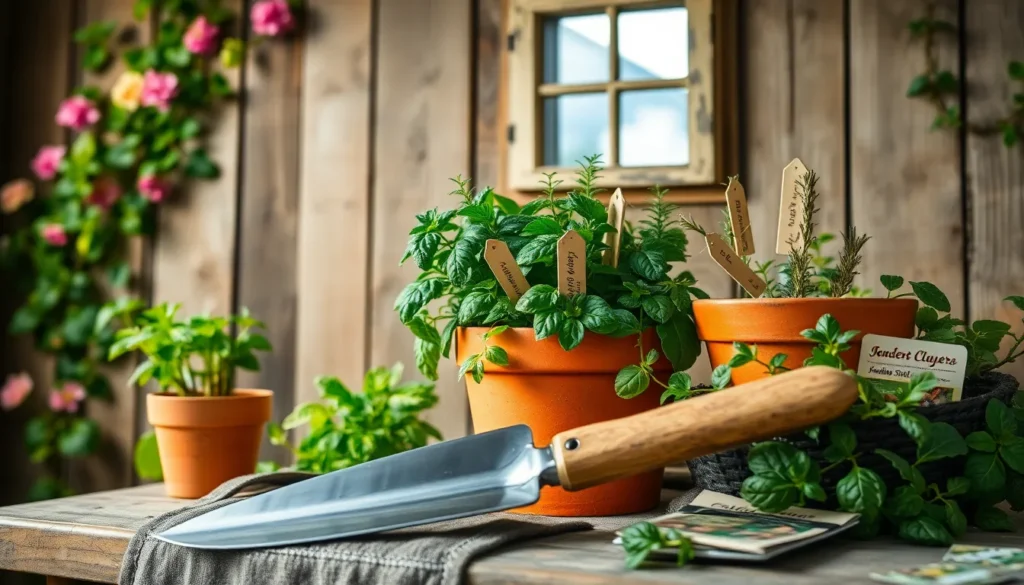Embarking on the journey of gardening is like opening a gateway to a world of endless possibilities and profound fulfillment. Whether you’re just getting your hands dirty for the first time or you’re a seasoned green thumb, the tools you choose can make all the difference in nurturing your plants and your passion. At the heart of every flourishing garden lies a collection of well-chosen tools, each playing its part in transforming your outdoor space into a thriving oasis. Selecting the right tools is not just about convenience; it’s about empowering yourself to garden with confidence and creativity.
In this article, we’ll delve into the essentials of choosing the right garden tools, giving you the knowledge to make informed decisions that suit your unique gardening style. We’ll cover everything from the must-haves for beginners to the specialized instruments that can elevate an experienced gardener’s toolkit. You’ll discover how the right spade or pruner can enhance efficiency, reduce strain, and even make the time spent in your garden more enjoyable. By the end of this guide, you’ll be equipped with practical tips and insights that will make your gardening experience more productive and pleasurable, regardless of your experience level.
Understanding Your Garden Needs
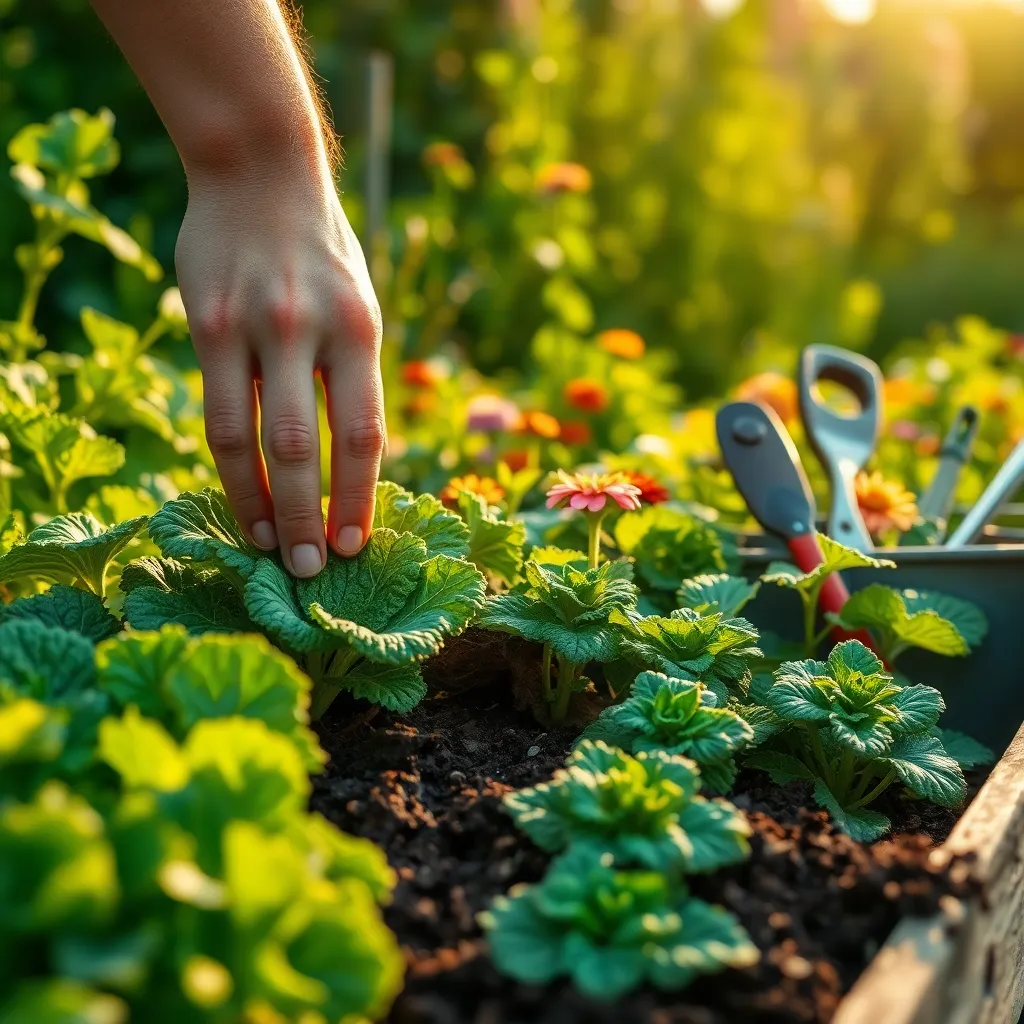
Understanding your garden’s specific needs is crucial to selecting the right tools. Begin by assessing the types of plants you wish to grow, as different species require different care methods.
Consider the soil type and drainage capabilities in your garden, as these will impact plant health and tool choices. For example, a garden with clay soil might necessitate sturdy tools for breaking up compact earth, while sandy soil requires different techniques.
Take note of the amount of sunlight your garden receives, as this affects plant growth and maintenance schedules. If your garden is mostly shaded, you might choose tools that help prune and manage shade-loving plants, such as ferns or hostas.
Watering needs also dictate the tools you’ll need; some plants prefer consistent moisture, while others thrive with less frequent watering. To efficiently manage watering, consider investing in a soaker hose or a drip irrigation system for precise delivery.
Beginners should start with a basic set of tools, including a trowel, pruners, and a hose with an adjustable nozzle. For advanced gardeners, specialized tools like soil testers and high-quality pruners can make a significant difference in plant health and garden maintenance.
Basic Tools for Every Gardener
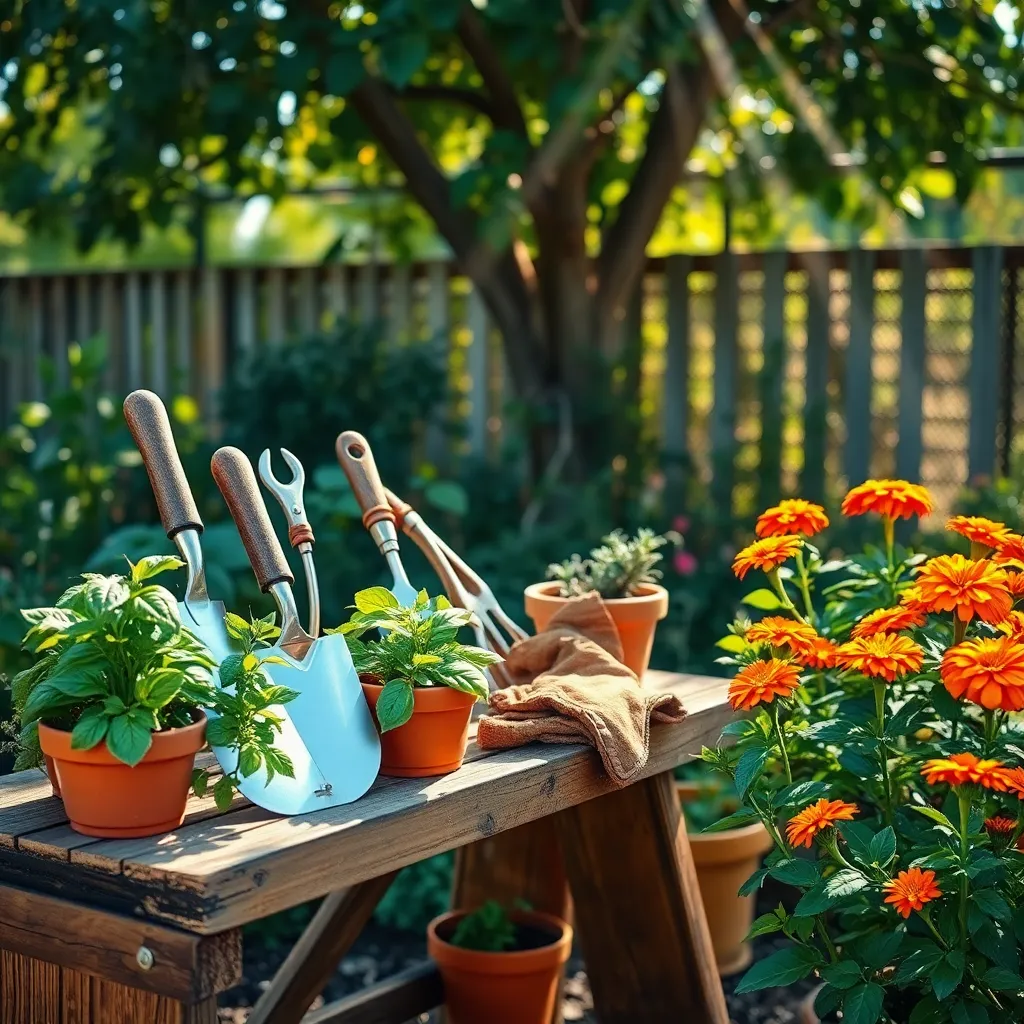
Having the right tools is essential for every gardener, whether you’re tending to a small balcony garden or a sprawling backyard. Begin with a quality pair of gloves to protect your hands from thorns and soil, ensuring comfort during extended gardening sessions.
Next, invest in a sturdy hand trowel for planting and transplanting small plants. Opt for a trowel with a stainless steel blade to prevent rust and a comfortable grip to ease hand strain during use.
Another indispensable tool is a reliable pruning shear. Keep your plants healthy by regularly trimming dead or overgrown branches, and choose shears with a sharp blade and ergonomic handle for efficient cutting.
For larger gardening tasks, a garden fork is invaluable for turning soil and breaking up clumps. Look for one with sturdy tines and a strong handle to help prepare your garden beds effectively.
Watering is crucial for plant health, so a durable watering can is a must-have. Select one with a detachable spray head to control flow, ensuring gentle watering for delicate seedlings and more robust streams for established plants.
Advanced gardeners may also appreciate a good pair of loppers for cutting thicker branches. These long-handled tools provide the leverage needed for tackling tougher jobs, making them ideal for pruning trees and shrubs.
With these basic tools, you’re well-prepared to tackle most gardening tasks with ease. Remember, investing in quality tools can make your gardening experience more enjoyable and productive.
Choosing the Right Shovel
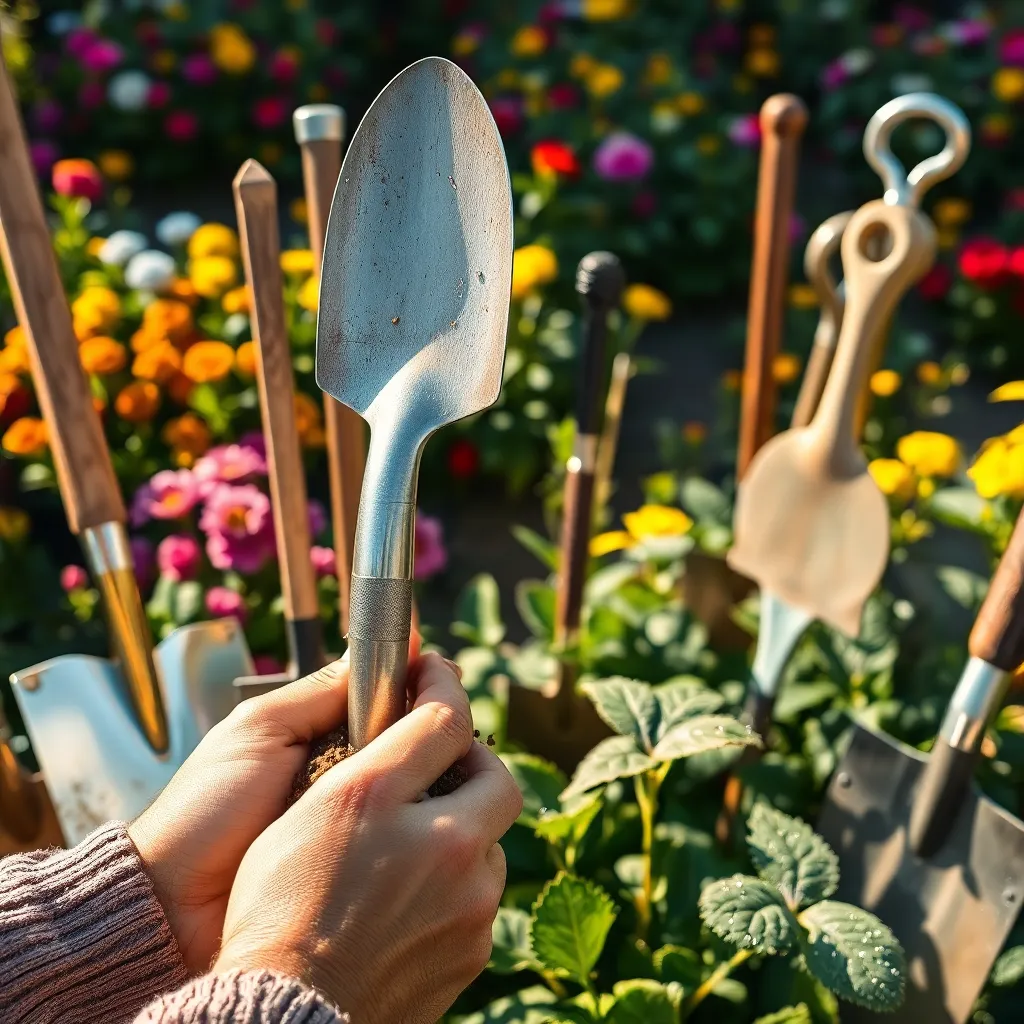
Choosing the right shovel is essential for any gardener aiming to make their work efficient and enjoyable. When selecting a shovel, consider the type of tasks you perform frequently, such as digging, planting, or moving soil.
Ergonomics is key when picking a shovel to ensure comfort and prevent strain on your back and shoulders. Look for shovels with a D-shaped handle, which offers better grip and control, particularly for heavy-duty tasks.
For digging, a round-point shovel is ideal as it can penetrate hard soil and assist in creating planting holes. If you often work with loose soil or compost, a square-point shovel will help scoop and transfer materials more efficiently.
Consider the material of the shovel blade, as it affects both durability and weight. A steel blade provides strength for tough jobs, while an aluminum blade offers a lighter option for those who prioritize ease of use over robustness.
Selecting Durable Pruning Shears
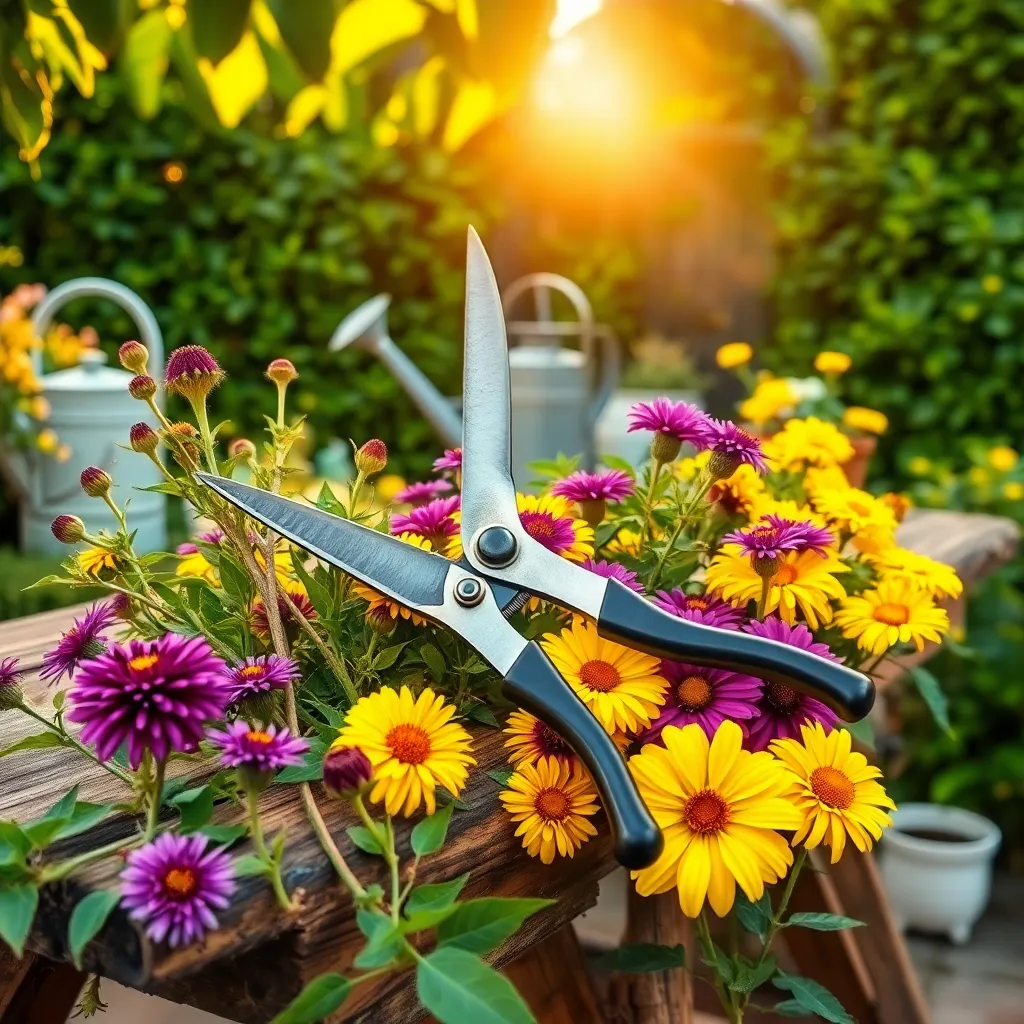
When selecting durable pruning shears, focus on the material and design to ensure longevity and effectiveness. Look for shears made from high-quality stainless steel or carbon steel, as these materials are resistant to rust and maintain sharpness with regular use.
The grip of the shears is another crucial consideration to ensure comfortable use over extended periods. Opt for ergonomic handles with a non-slip coating, which can help prevent hand fatigue and provide better control, especially during heavy pruning tasks.
For beginners, bypass pruners are a great choice due to their ability to make clean cuts on live plants without crushing stems. Experienced gardeners might also explore anvil pruners, which are ideal for cutting dead wood, offering precision and strength.
Regular maintenance of your pruning shears can significantly extend their lifespan. Sharpen blades frequently and apply a light coat of oil to prevent rust, ensuring your tools are always ready for action when your garden needs a tidy trim.
The Importance of a Good Rake
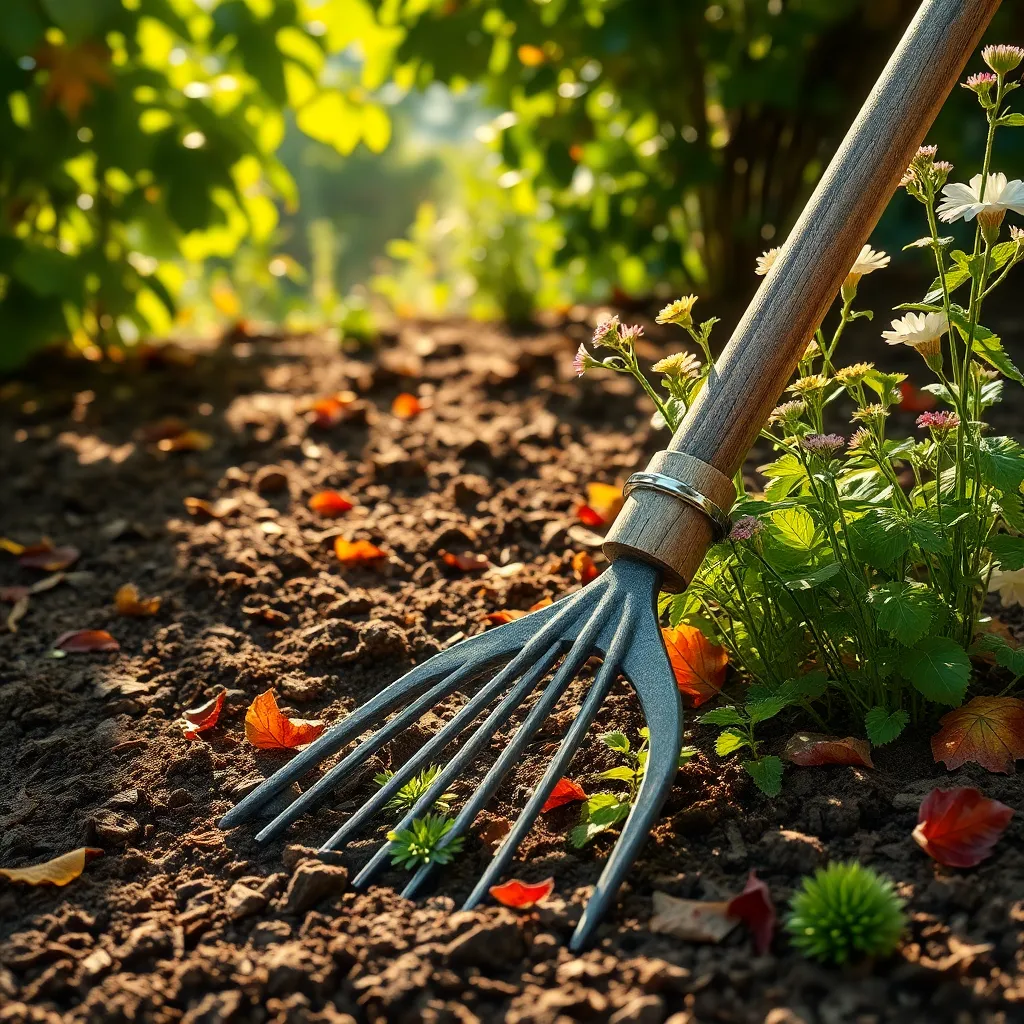
A good rake is an essential tool for maintaining a healthy and tidy garden. It helps you to efficiently clear leaves, debris, and even loosen soil, promoting better air circulation and water penetration.
When choosing a rake, consider the type of garden work you plan to tackle. A leaf rake with flexible tines is ideal for gathering leaves, while a bow rake with stiff tines is perfect for moving heavy soil or gravel.
Investing in a rake with an adjustable handle can make your gardening tasks more comfortable. This feature allows you to adjust the length to suit your height, reducing strain on your back and arms.
For more advanced gardeners, using a rake to incorporate mulch or compost into your soil can greatly enhance soil fertility. This technique ensures that nutrients are evenly distributed, improving plant growth and health.
Finding the Best Garden Hoe
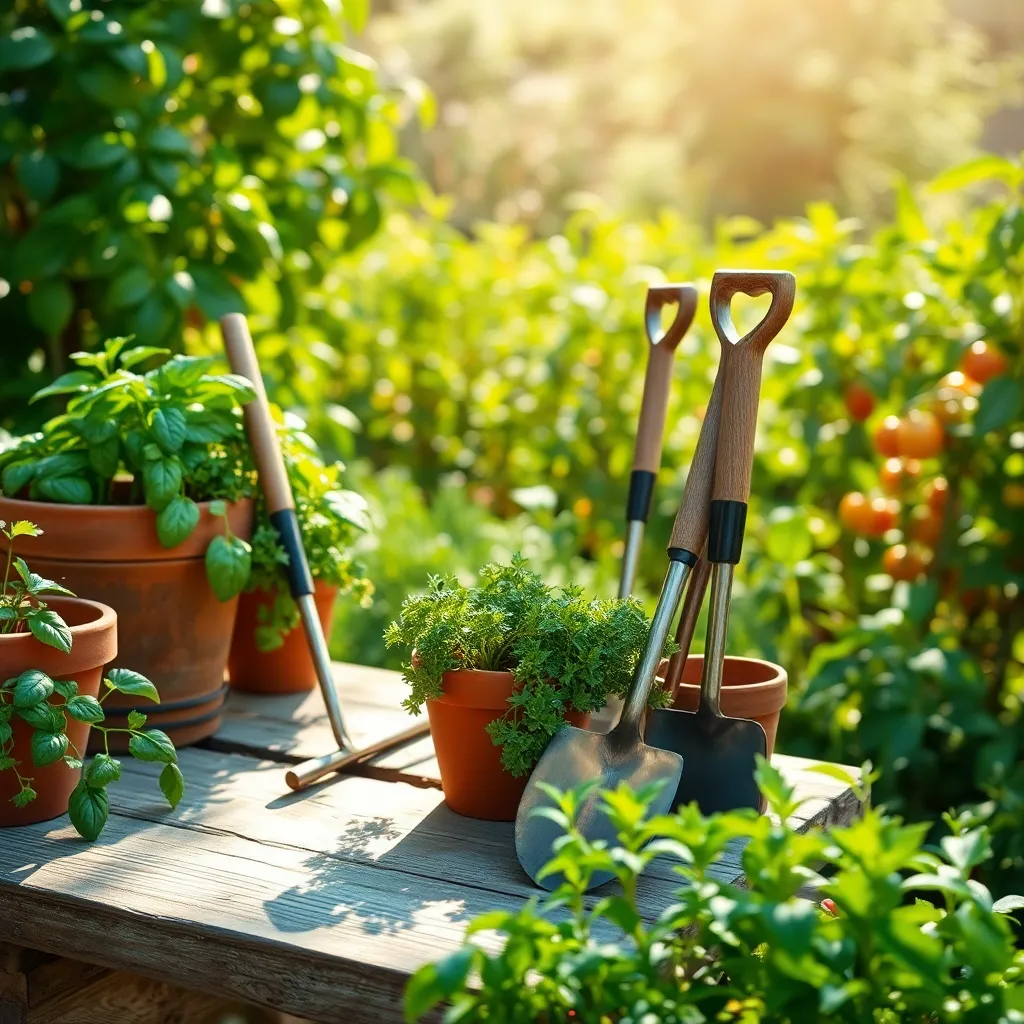
Choosing the right garden hoe can make a significant difference in your gardening experience. Understanding the various types of hoes and their specific uses is crucial to maintaining an efficient and enjoyable garden routine.
A standard hoe is ideal for basic weeding and soil cultivating tasks. For more precise work, consider a stirrup hoe, which is designed to cut weeds just below the soil surface with minimal effort.
When selecting a hoe, prioritize comfort and durability. Look for a hoe with a lightweight handle and a blade made of high-quality, rust-resistant steel to ensure longevity and ease of use.
Advanced gardeners might explore hoes with interchangeable heads to tackle different gardening tasks efficiently. This flexibility can save time and effort, allowing you to focus on plant care and garden aesthetics.
Efficient Watering Tools Selection
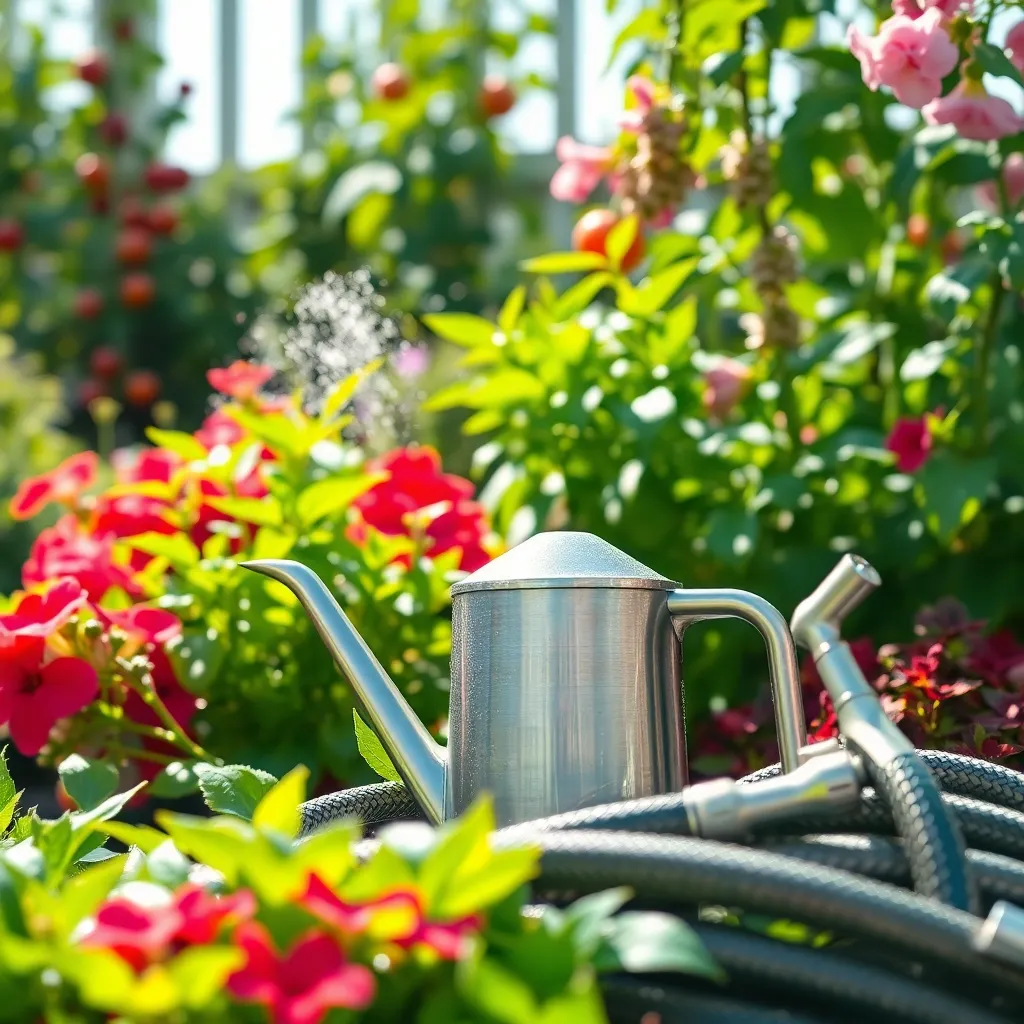
Choosing the right watering tools can make a significant difference in your garden’s health. It’s essential to select tools that are both efficient and easy to use, ensuring your plants receive the right amount of water.
Consider investing in a quality garden hose with a nozzle that allows you to adjust the water flow. Hoses with adjustable nozzles provide flexibility, letting you switch from a gentle mist for delicate plants to a stronger stream for larger shrubs.
Drip irrigation systems are an excellent choice for those looking to save water and time. These systems deliver water directly to the plant’s roots, minimizing evaporation and ensuring optimal moisture levels even during dry spells.
For smaller gardens or pot plants, a watering can with a long spout can be incredibly useful. This tool allows you to reach plants in tight spaces, providing precise watering without disturbing the soil.
Exploring Handy Gardening Gloves
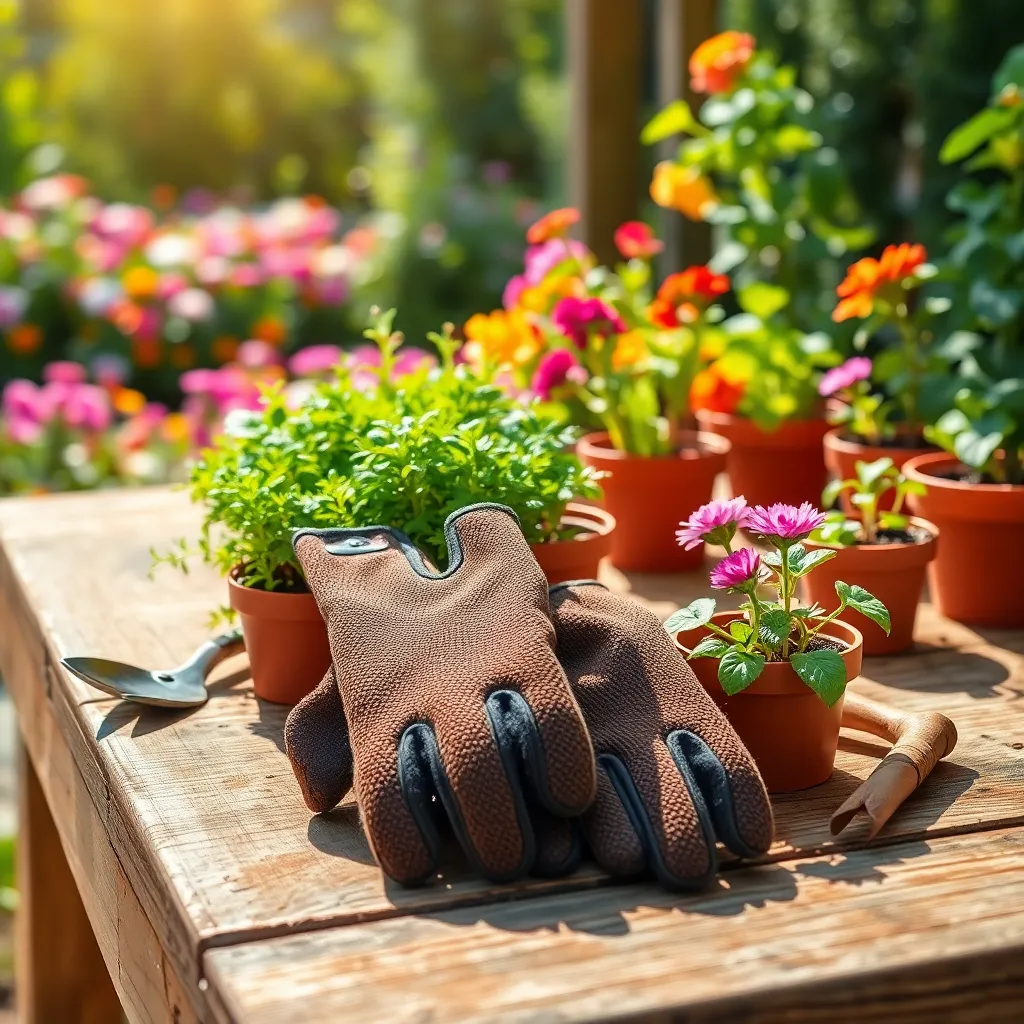
Gardening gloves are an essential tool that can make your gardening experience more enjoyable and productive. They not only protect your hands from thorns and blisters but also enhance your grip when handling tools or plants. Look for gloves made from durable materials like leather or nitrile, which are excellent for resisting wear and tear.
For beginners, choosing the right fit is crucial to avoid discomfort and accidents. Gloves that are too tight can restrict movement, while loose ones might reduce your ability to handle delicate plants efficiently. Consider gloves with reinforced fingertips for added protection when working with thorny plants, ensuring your fingers stay safe while pruning or weeding.
Advanced gardeners may appreciate gloves with additional features like breathable fabric or water resistance. These features help maintain comfort during long gardening sessions, especially in humid or wet conditions. Opt for gloves with an adjustable wrist strap to keep dirt out and ensure a snug fit, providing both comfort and functionality.
Maintaining your gloves can extend their lifespan significantly. After each use, remove excess dirt and store them in a dry place to prevent degradation of the materials. If you frequently work with chemicals or fertilizers, consider having a separate pair of gloves dedicated to those tasks to avoid cross-contamination and keep your skin safe.
Choosing the Right Tool Storage

Organizing your garden tools effectively can save you time and frustration. A well-planned storage system ensures that your tools are always within reach and in good condition.
To start, consider investing in a durable tool rack or pegboard for easy access. These systems allow you to see all your tools at a glance, making it easier to find what you need quickly.
For gardeners with limited space, wall-mounted solutions or stackable bins can maximize storage without taking up valuable floor space. Look for weather-resistant options if your storage area is exposed to the elements.
To keep smaller tools like pruners and trowels organized, use a designated shelf or hanging basket. Ensure these are placed at a comfortable height to prevent unnecessary bending or stretching.
Advanced gardeners might consider a dedicated tool shed for an all-in-one solution. This can also double as a workspace for potting plants or cleaning equipment.
Regular maintenance of your tools, such as cleaning and sharpening, can extend their lifespan significantly. Store them in a dry place to prevent rust and deterioration, ensuring they’re ready for use at any time.
Maintenance Tips for Longevity
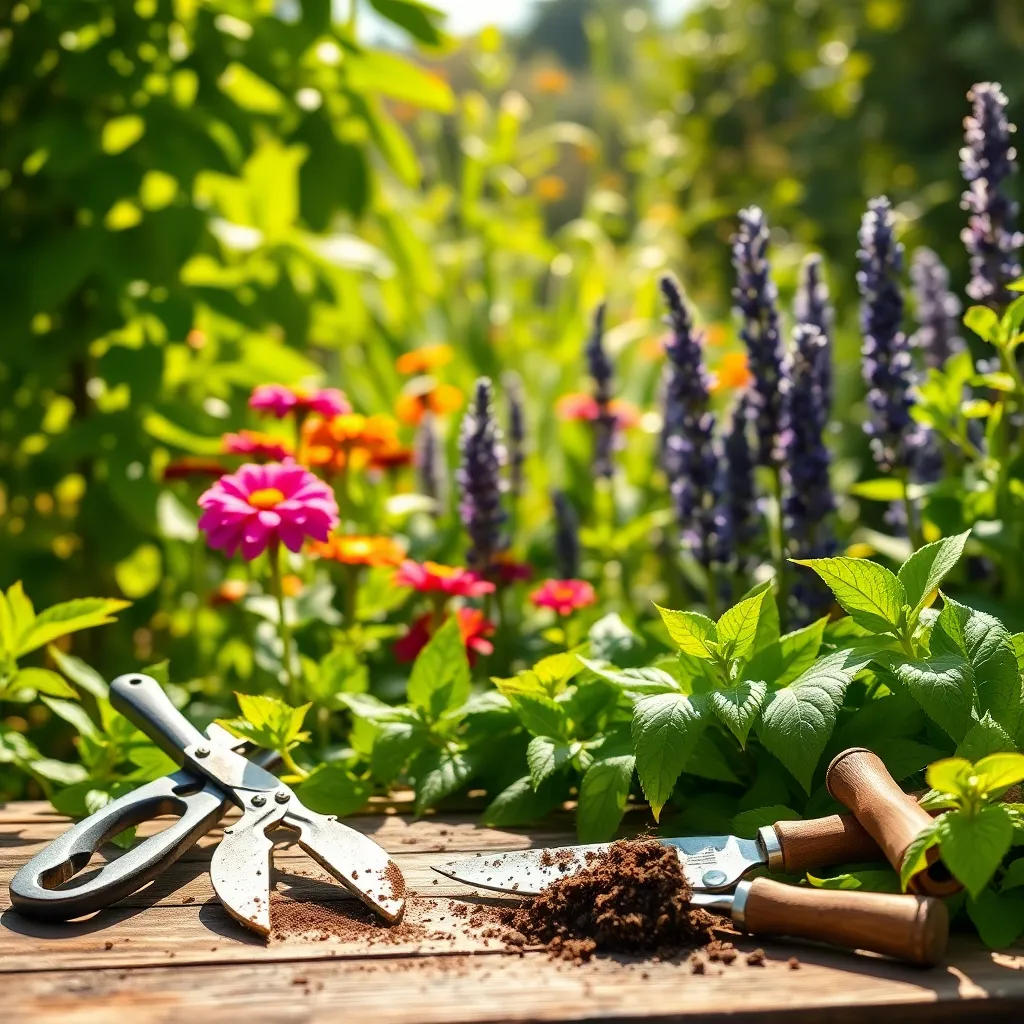
Maintaining your garden tools properly is essential for ensuring their longevity and performance. After each use, clean your tools with a wire brush or putty knife to remove dirt and plant residues, and dry them thoroughly to prevent rust.
For sharper tools like pruners and shears, regular sharpening is crucial to maintain clean cuts that do not damage plants. Use a sharpening stone or file to keep blades in optimal condition, which also reduces the effort required during gardening tasks.
Oiling metal parts can help prevent rust and corrosion, which are common problems in humid environments. Use a light machine oil and apply it to joints and blades after cleaning to create a protective barrier against moisture.
Wooden handles require care as well to avoid splintering and breaking. Sand them lightly as needed and treat them with linseed oil to preserve the wood, ensuring a comfortable grip and extending the tool’s life.
It’s important to store your tools in a dry, secure place, like a shed or garage, to protect them from the elements. Consider hanging them or using a tool rack to keep them organized and easily accessible, reducing clutter and accidental damage.
Conclusion: Growing Success with These Plants
In your pursuit of a flourishing garden and a thriving relationship, choosing the right tools is crucial. We’ve explored ten key concepts: understanding each other’s needs, effective communication, mutual respect, setting shared goals, finding balance, practicing patience, maintaining trust, nurturing intimacy, embracing compromise, and continuous growth. These principles are as essential in relationships as the perfect spade is in gardening—each playing a vital role in cultivating a harmonious and fulfilling partnership.
Now, let’s plant the seeds of action. Choose one concept that resonates most and discuss it with your partner today. Perhaps you’ll decide to focus on strengthening communication or nurturing intimacy. Whatever you choose, take that step together.
As you embark on this nurturing journey, we encourage you to bookmark this article. Having these insights at your fingertips will serve as a gentle reminder of the tools necessary for relationship success.
Remember, every relationship garden requires attention and care. By investing in these principles, you are setting the stage for a beautiful, enduring partnership. With dedication and love, your relationship can bloom into something truly extraordinary. Keep this guide close, and watch your connection thrive.

